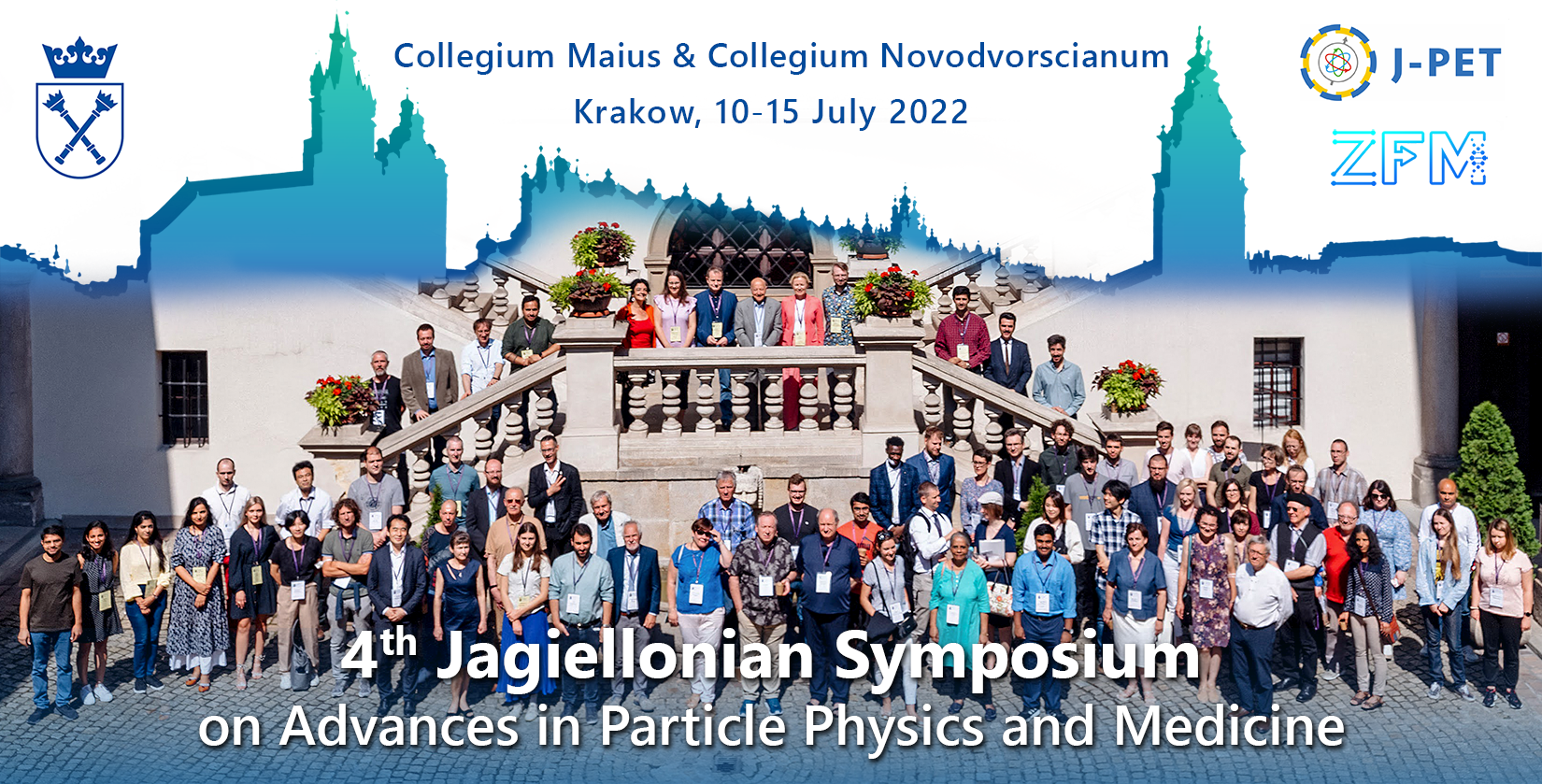Speaker
Description
Author: Deepak Kumar
Co-author: Sushil Sharma
D. Kumar1,2,3, S. Sharma1,2,3 on behalf of the J-PET collaboration
1Faculty of Physics, Astronomy, and Applied Computer Science, Jagiellonian University, Poland.
2Total-Body Jagiellonian-PET Laboratory, Jagiellonian University, Kraków, Poland
3Center for Theranostics, Jagiellonian University, Cracow, Poland
e-mail: d.kumar@doctoral.uj.edu.pl
Quantum electrodynamics predicts that photons originating from the decays of e+e- annihilations are entangled and have mutually orthogonal linear polarization [1]. Since the polarization of the photons is orthogonal to each other, correlation can occur in subsequent interactions. Compton scattering of photons can be used as a polarization analyser to measure such correlations [2]. To measure the correlation between the scattered photon due to entanglement, the two photons must be detected before and after the scattering [3]. Thanks to its unique geometry, J- PET can be used as a potential detector to perform such studies in full phase space [4,5,6]. It consists of 192 plastic scintillators with dimensions 50 x1.9 x 0.7cm3 (length x width x height) arranged in 3 cylindrical layers with increasing radial distance 42.50 cm, 46.75 cm and 57.5 cm, respectively [4]. Photons interact mainly via the Compton effect inside plastic scintillators. Since an incident photon interacting with the plastic scintillator is mostly scattered perpendicular to the polarization direction of the incident photon, the polarization of a single photon is defined as the cross product of the momentum vectors of the photon before and after scattering (ϵ=k ×k') [7].
Our goal is to study the correlation between the polarization vectors of annihilation photons produced either by direct annihilation of electron and positron or by the formation of a positronium atom in the presence of a medium. In this presentation, the methodology to perform such studies in the framework of J-PET detector and the preliminary results will be presented.
The authors acknowledge support by the TEAM POIR.04.04.00-00-4204/17
program, the NCN grant no. 2021/42/A/ST2/00423 and the SciMat and
qLife Priority Research Areas budget under the program Excellence
Initiative - Research University at the Jagiellonian University.
References:
[1] Snyder, H. S., Pasternack, S. & Hornbostel, J Phys. Rev.73, 440 (1948)
[2] O. Klein, Y. Nishina, Y. Z. Physik 52, 853 (1929)
[3] P. Moskal et al., Acta Phys. Polon. B 47, 509 (2016)
[4] S. Niedzwiecki et al., Acta Phys. Polon. B48 (2017) 1567
[5] P. Moskal et al., Nature Communications 12. 5658 (2021)
[6] P. Moskal et al., Science Advances, Vol 7, Issue 42, Page No. 4394 (2021)
[7] P. Moskal et al. Eur. Phys. J. C 78, 970 (2018).

